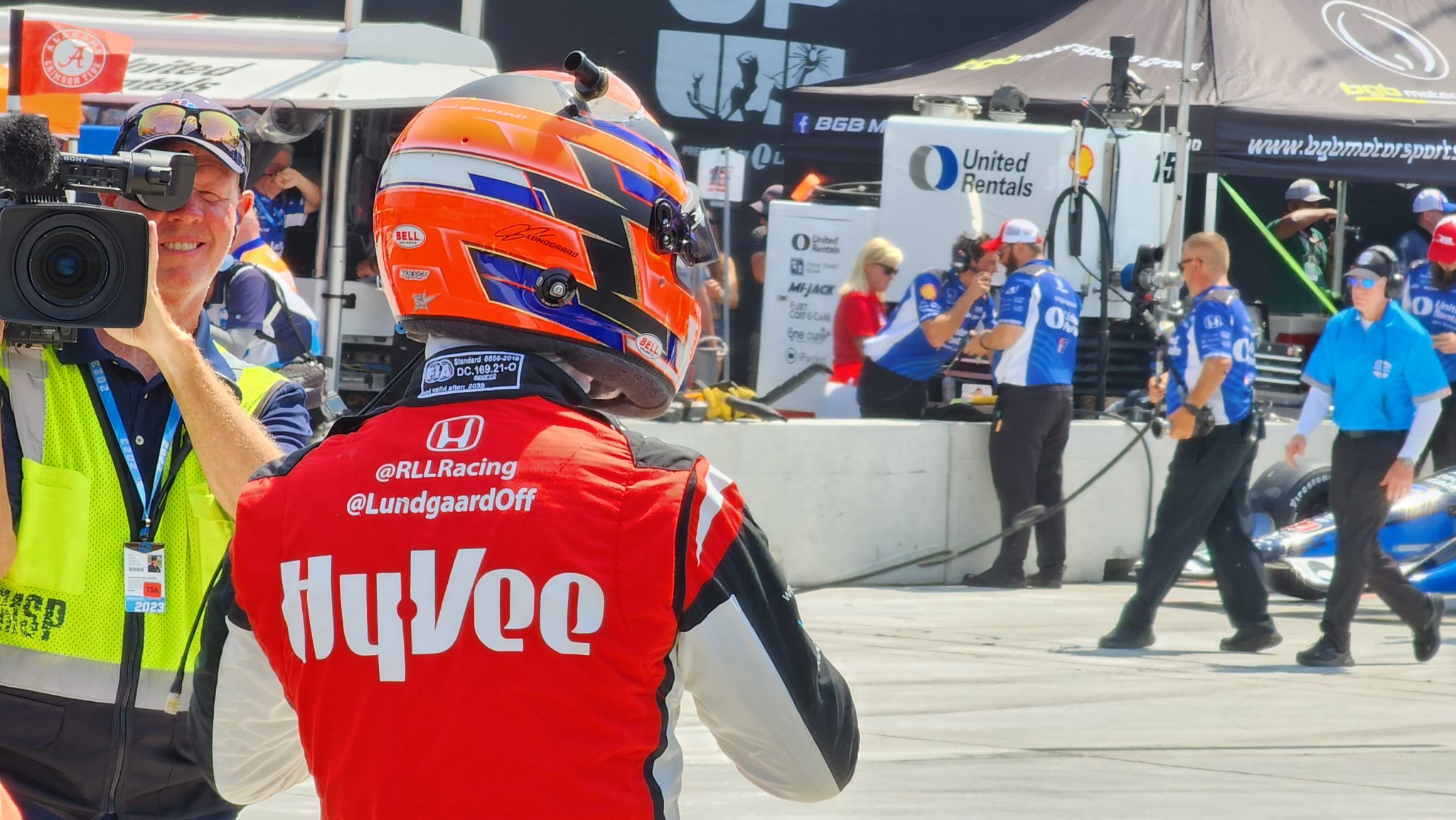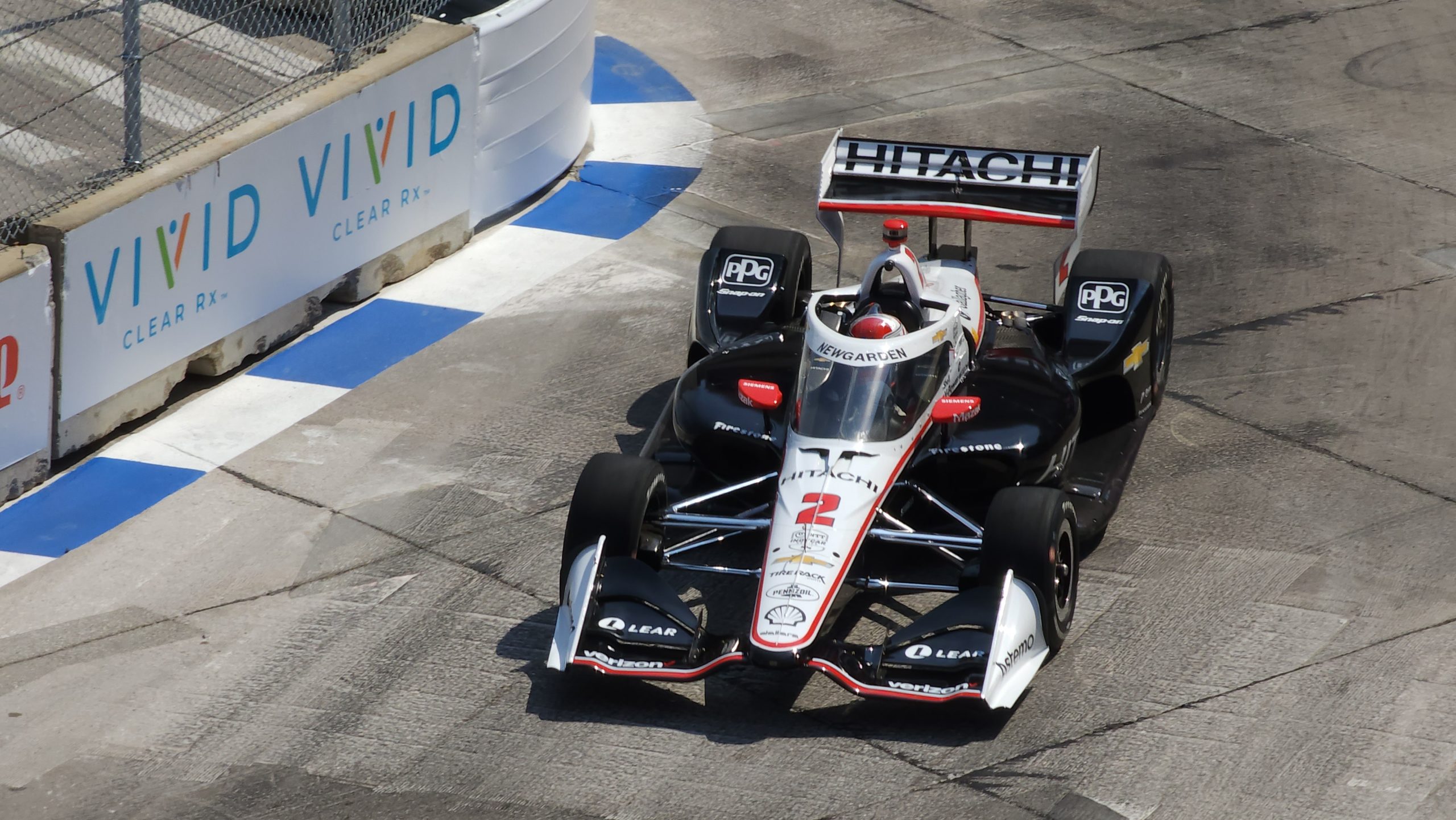Detroit Grand Prix’s return to downtown draws new fans, but drivers have concerns
Detroit IndyCar fans welcomed the race’s return to city streets, but challenges still remain for the event’s future.

IndyCar driver Christian Lundgaard prepares to get in his car before a practice session in Detroit, Mich.
The first Detroit Grand Prix away from Belle Isle since 1991 is now in the books. Alex Palou won last weekend’s race, which made use of a new, temporary track layout around the Renaissance Center.
While the new format appeared to bring in new fans to the IndyCar race, there are still improvements that need to be made for both the drivers’ and spectators’ sake.
Listen: Fans and drivers discuss the new Detroit Grand Prix format
New experiences cater to Detroit IndyCar fans
When race organizers decided to move the activity downtown streets, the goal was simple: create an event with more buzz to increase attendance to the track and boost its economic impact on the city of Detroit.
This year’s race did manage to accomplish the goal of attracting new fans — including people like Benjamin Day, who says he enjoyed the atmosphere.

“I love seeing people in the heart of Detroit,” says Day. “I love this city and I love seeing an actual vibrance.”
And there was plenty to do at the track besides the race. Free concerts throughout the weekend in Hart Plaza, headlined by Big Boi and Steve Aoki, kept crowds downtown even after the races were finished.
Another way race organizers aimed to attract fans was by making a large portion of the track open for free public viewing. That’s where Dewayne, who didn’t want to give his last name, was enthusiastically cheering along the fence line on Jefferson Avenue.
“I always love racing,” says Dewayne. “I use to watch racing when there was nothing to watch on Sunday.”
Like Benjamin Day, Dewayne admits he never got to see the Grand Prix in person during the Belle Isle era. But now that the event returned downtown, he was excited to check it out.
“We talking about professional racing,” Dewayne exclaims. “I’m loving it! And I’m a Detroit native, born and raised.”
Return to downtown Detroit brings new race format
The free city street public viewing model has been done before at an IndyCar race in Nashville, Tenn. It was that event’s inaugural running that inspired Detroit Grand Prix officials to bring their race downtown.
Nashville is also a home race for Tennessee native and 2023 Indy 500 winner Josef Newgarden, who shares that the formula has proven successful there.

“Everyone loves that race in my city,” says Newgarden. “I think the same can happen here in Detroit.”
Grand Prix organizers predict this year’s race will have a greater economic impact than it had when it was on Belle Isle. And after years of mixed emotions over the race’s impact on the island, those with vested interest hope it sees a big jump in public support.
That includes Charisse Jones, who has volunteered at 25 Detroit Grand Prix race weekends.
“I started when the race was downtown,” says Jones. “I liked the island but it’s nice to be back downtown.”
Jones says she witnessed enthusiastic crowds throughout the weekend — a continuation of what she came to know on Belle Isle. She hopes the event can find longevity on the streets of Detroit.
“I’m hoping that it stays on the circuit,” says Jones.
IndyCar drivers have concerns about the downtown track
While fans seemed to enjoy the event, not all the drivers were in love with the new track. Many predicted the narrow layout would lead to a crash-filled main event.
They weren’t wrong.
Seven yellow flags meant about a third of the Detroit Grand Prix’s 100 laps were spent at slower speeds while crews cleaned up wreckage. There were also two separate instances where drivers hit the wall while the field was already slowed behind the pace car.
Alex Palou was the fastest man throughout the weekend — winning pole position on Saturday and the Grand Prix on Sunday. Still, he says he wasn’t a fan of the track.
“It’s too tight for IndyCar. It’s too short for IndyCar. There’s too much traffic — it’s too bumpy,” Palou says.
Palou would like race organizers to explore changing the track layout to make the roughly one-minute lap time about 20 seconds longer.
Driver or fan experience: What’s more important?
If the Detroit Grand Prix can generate revenue, attract fans and provide a boost to the city, how much does the actual racing product matter?
Newgarden believes it’s a balancing act to keep all parties happy.
“When it’s an event, there’s a lot of other time when cars aren’t on track,” says Newgarden. “You want people to enjoy the atmosphere [and] enjoy each other’s company. But the on-track product is really important.”

IndyCar driver Jack Harvey finished 17th in the Detroit Grand Prix. He says there’s more to consider than just the in-person audience.
“When you talk about a fan experience, you’ve got to break that down into categories,” says Harvey. “It’s their experience at the track but it’s also for fans watching at home — being able to watch a great race.”
Roughly one million TV viewers witnessed the race from home according to IndyCar broadcast partner NBC Sports. Harvey says he isn’t sure a collision-filled race makes for good television, even if there is a great in-person atmosphere.
“There’s a knife edge on which you can swing and fall in either direction,” Harvey explains. “I think at the end of the day you have to go out there and try to do both and then be flexible with changes.”
Going into the event, Detroit Grand Prix organizers acknowledged this year was going to be a learning experience. They will have an opportunity to make the necessary changes, as the race — in its downtown format — is under contract with the City of Detroit for two more years.
Trusted, accurate, up-to-date.
WDET strives to make our journalism accessible to everyone. As a public media institution, we maintain our journalistic integrity through independent support from readers like you. If you value WDET as your source of news, music and conversation, please make a gift today.
